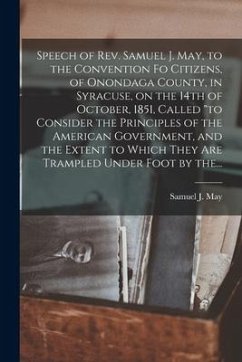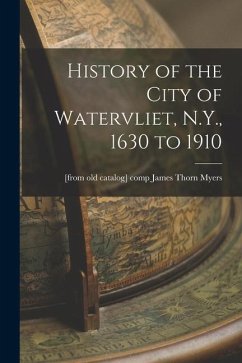
Moses Atwater of Canandaigua, N.Y., to Samuel J. Andrews of Derby, Conn. A Packet of Letters Relating to the Early History of Rochester. 1812-14

PAYBACK Punkte
8 °P sammeln!
A collection of letters from Moses Atwater of Canandaigua, N.Y., to Samuel J. Andrews of Derby, Conn., offering a glimpse into the early history of Rochester during the years 1812-1814. This packet of letters serves as a valuable primary source, shedding light on the social, economic, and political conditions of a burgeoning American settlement in the early 19th century. These letters provide insights into the daily life, challenges, and aspirations of individuals contributing to the development of Rochester and the surrounding region. "Moses Atwater of Canandaigua, N.Y., to Samuel J. Andrews ...
A collection of letters from Moses Atwater of Canandaigua, N.Y., to Samuel J. Andrews of Derby, Conn., offering a glimpse into the early history of Rochester during the years 1812-1814. This packet of letters serves as a valuable primary source, shedding light on the social, economic, and political conditions of a burgeoning American settlement in the early 19th century. These letters provide insights into the daily life, challenges, and aspirations of individuals contributing to the development of Rochester and the surrounding region. "Moses Atwater of Canandaigua, N.Y., to Samuel J. Andrews of Derby, Conn." offers a unique and intimate perspective on a pivotal period in American history, capturing the voices and experiences of those who shaped the nation's future. This work has been selected by scholars as being culturally important, and is part of the knowledge base of civilization as we know it. This work was reproduced from the original artifact, and remains as true to the original work as possible. Therefore, you will see the original copyright references, library stamps (as most of these works have been housed in our most important libraries around the world), and other notations in the work. This work is in the public domain in the United States of America, and possibly other nations. Within the United States, you may freely copy and distribute this work, as no entity (individual or corporate) has a copyright on the body of the work. As a reproduction of a historical artifact, this work may contain missing or blurred pages, poor pictures, errant marks, etc. Scholars believe, and we concur, that this work is important enough to be preserved, reproduced, and made generally available to the public. We appreciate your support of the preservation process, and thank you for being an important part of keeping this knowledge alive and relevant.












